 |
 |
 |
| |
Lipidome abnormalities and altered macrophage phenotype may
contribute to cardiovascular disease risk in the aging HIV population
|
| |
| |
Download the PDF here
10th International Workshop on HIV and Aging, October 10-11, 2019, New York Reported by Jules Levin
Emily Bowman PhD
The Ohio State UniversitySchool of Health and Rehabilitation SciencesER Bowman1, M Kulkarni1, J Gabriel1, A Kettelhut1, M Cichon1, K Reidl1, S Koletar1, B Richardson2, C Cameron2, M Cameron2, NT Funderburg11The Ohio State University, Columbus, OH, USA; 2Case Western Reserve University, Cleveland, OH, USA
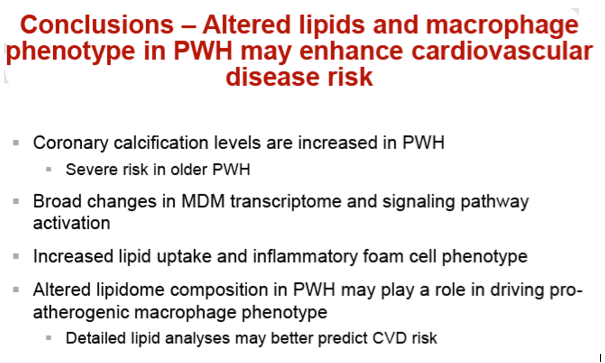
program abstract
Lipidome abnormalities and altered macrophage phenotype may contribute to cardiovascular disease risk in the aging HIV population
Bowman E1, Kulkarni M1, Gabriel J1, Kettelhut A1, Cichon M1, Riedl K1, Koletar S1, Richardson B2, Cameron C2, Cameron M2, Funderburg N1
1The Ohio State University, Columbus, United States, 2Case Western Reserve University, Cleveland, United States
Background: The number of people with HIV (PWH) over the age of 50 is increasing worldwide. Even with suppressive antiretroviral therapy (ART), chronic inflammation persists in PWH, which may complicate the aging process and accelerate the development of comorbidities. Both HIV infection and ART are associated with dyslipidemia and increased cardiovascular disease (CVD) risk. Macrophages accumulate in blood vessel walls and produce factors that contribute to vascular inflammation. The relationships among lipids and macrophage phenotype in PWH are not well understood.
Methods: Coronary artery calcification (CAC) in people with (n=40) and without (n=15) HIV was quantified by computed tomography scanning. PBMCs from people with (n=20) and without (n=20) HIV were cultured for 5 days in medium containing 20% autologous serum to generate monocyte-derived macrophages (MDMs). Concentrations and fatty acid composition of serum lipids were measured by mass spectrometry. MDM transcriptomes and differential gene expression (DGE) were analyzed using our R Bioconductor pipeline. Foam cell formation was assessed by Bodipy staining and DiI-OxLDL uptake. Immune activation and ROS production was assessed by flow cytometry.
Results: PWH (ages 27-67) had significantly increased CAC scores compared to people without HIV (ages 25-70) (CAC=367 v 25, p=0.01). Traditional risk assessments categorize individuals with CAC scores <100 at low risk, and >400 at high risk for CVD events. Older (over 55) PWH (n=17) had an average CAC score of 423, compared to a score of 71 in older people without HIV (n=7). PWH had significant alterations in lipidome composition, including increased serum levels of free fatty acids (FFAs), with enrichment of saturated fatty acids (SaFAs) and reduced polyunsaturated fatty acids (PUFAs). In older PWH, serum concentrations of triacylglycerols, diacylglycerols, ceramides (CERs), and FFAs tended to be increased compared to younger PWH. Saturated CERs, previously linked to CVD in the general population, were directly associated with sCD14 levels in older PWH (r=0.857, p=0.02), but not in younger PWH. DGE analysis of MDMs from participants with and without HIV identified broad alterations in innate immune signaling, cell cycle regulation, DNA damage repair, replication complexes, mitochondrial dysfunction, and lipid processing pathways. Levels of individual SaFA and PUFA lipid species correlated with unique DGE signatures and altered metabolic pathway activation in MDMs. Bodipy staining indicated greater lipid accumulation, and DiI-OxLDL exposure resulted in significantly increased OxLDL uptake by MDMs from PWH. MDMs from PWH also produced more TNFα, IL-6, and ROS, and had increased HLADR surface expression. SaFA levels were directly related, whereas PUFAs were inversely related to HLADR expression on MDMs from PWH. Additionally, MDMs from people without HIV exposed to HIV+ pooled serum displayed greater intracellular lipid accumulation and DGE than did cells exposed to HIV- pooled serum.
Conclusions: Lipid abnormalities in HIV infection may contribute to a pro-atherogenic MDM phenotype. MDMs from PWH readily form foam cells, have altered transcriptional profiles, and produce mediators of vascular inflammation, which may enhance CVD risk. Identifiying mechanisms of immune dysregulation in PWH will likely be of particular importance for management of comorbidities in the aging HIV population.
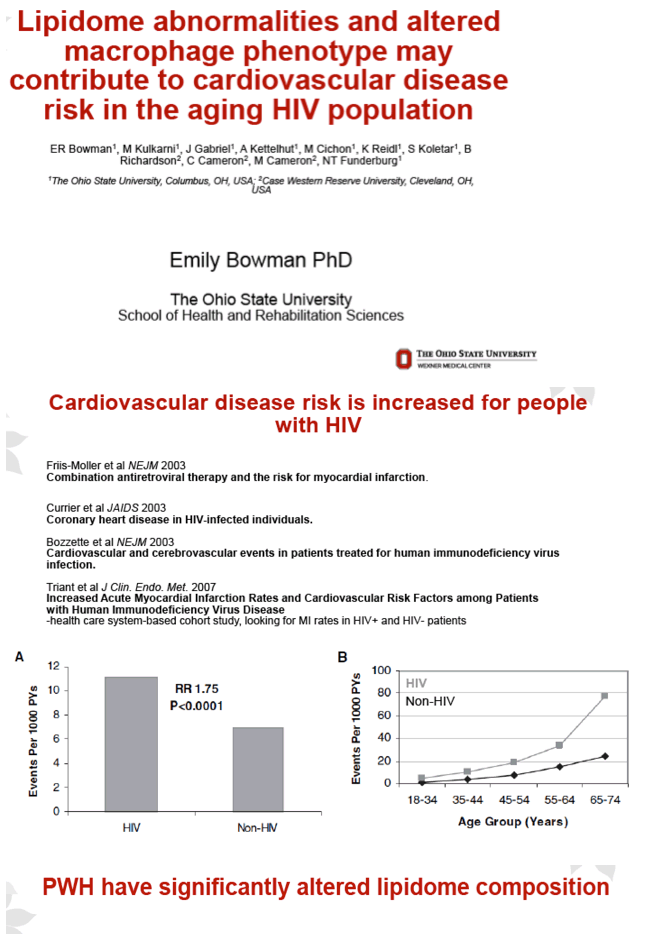


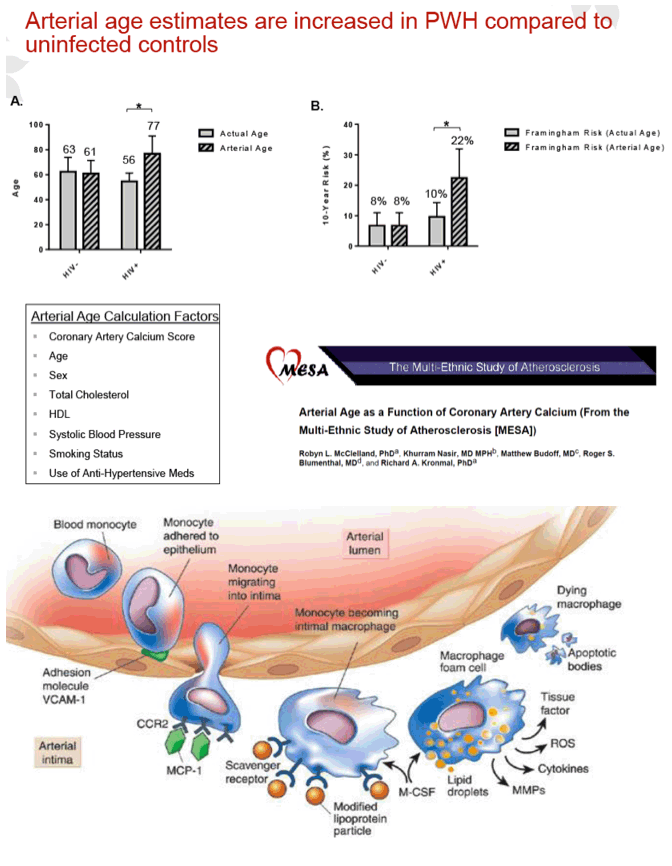

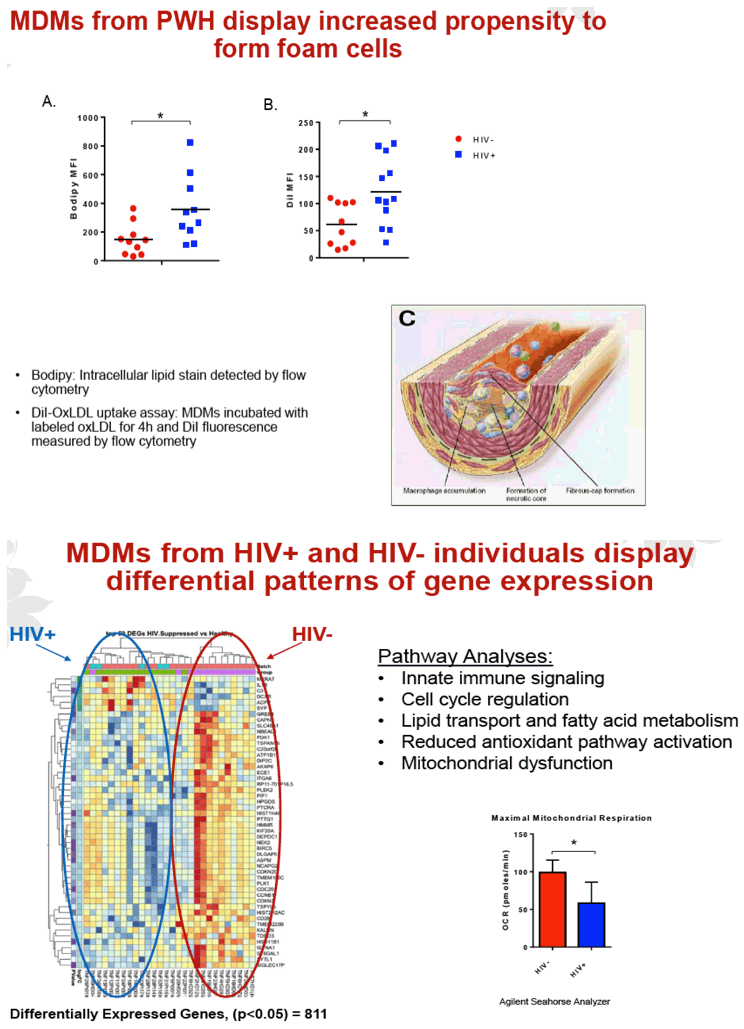
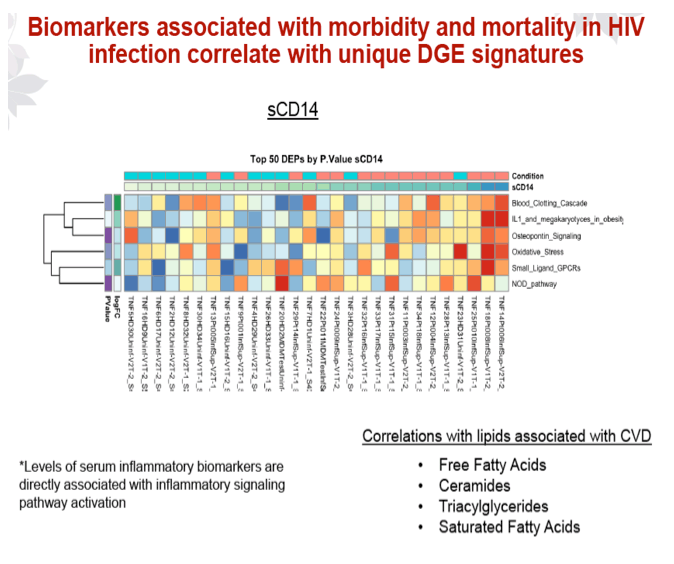
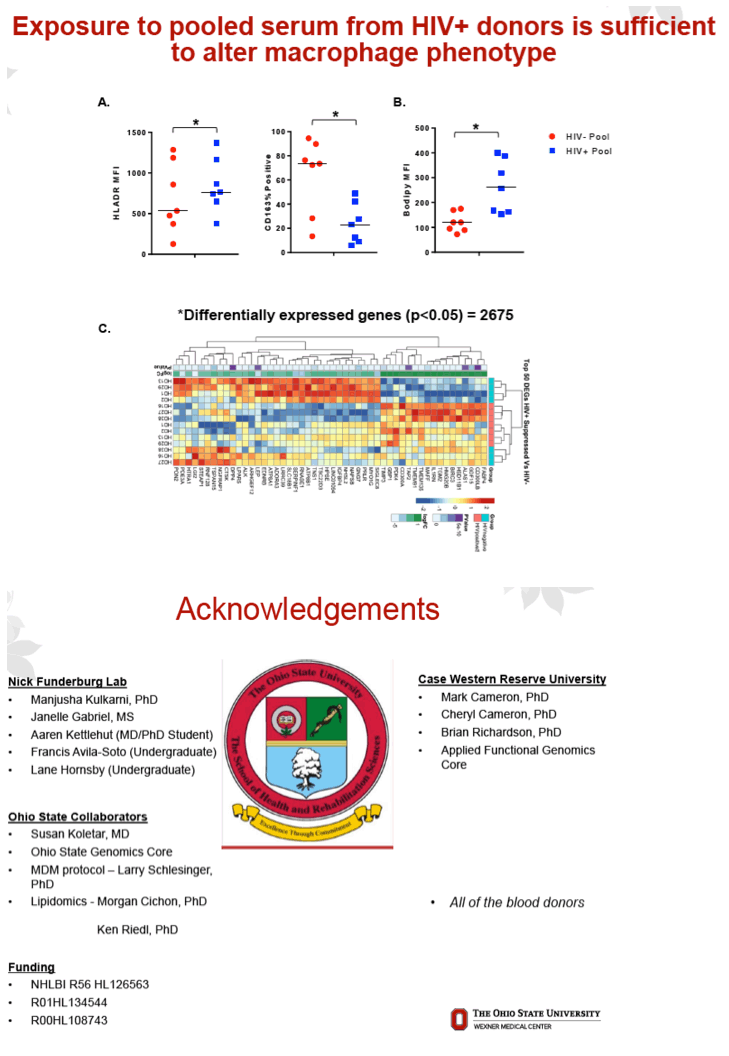
|
| |
|
 |
 |
|
|